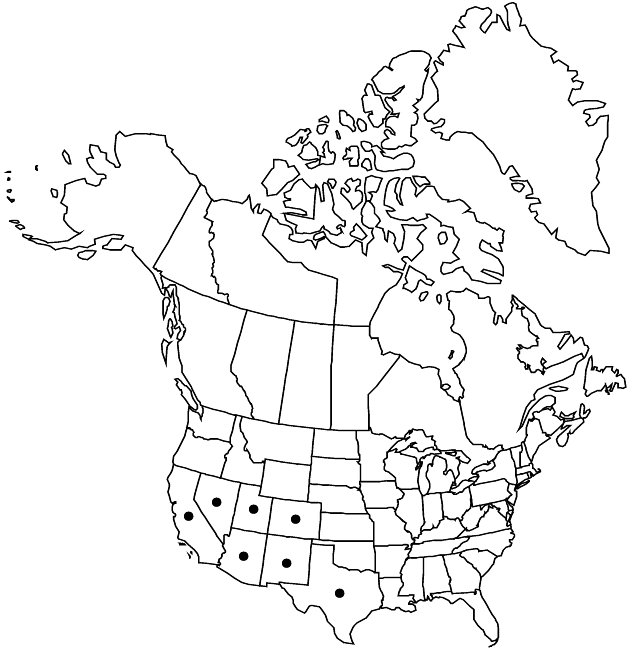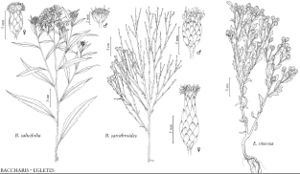Difference between revisions of "Baccharis salicifolia"
Syn. Pl. 2: 425. 1807.
imported>Volume Importer |
RevisionBot (talk | contribs) m (Bot: Adding category Revised Since Print) |
||
| Line 113: | Line 113: | ||
}}<!-- | }}<!-- | ||
| − | -->[[Category:Treatment]][[Category:Baccharis]] | + | --> |
| + | |||
| + | [[Category:Treatment]] | ||
| + | [[Category:Baccharis]] | ||
| + | [[Category:Revised Since Print]] | ||
Latest revision as of 14:27, 15 December 2020
Shrubs, 30–400 cm (stems clustered). Stems spreading to ascending, green to tan, simple proximally, sparingly branched distally, striate-angled, glabrous or minutely hairy, resinous and ± resin-varnished. Leaves present at flowering (abundant, well developed); sessile or petiolate; blades lanceolate-elliptic, slightly falcate (willowlike), 30–150 × 3–20 mm, bases attenuate, margins usually finely serrate from bases to apices, sometimes entire, apices acute to acuminate, faces glabrous, gland-dotted, ± resinous. Heads in terminal, compound corymbiform arrays (often involving distal branches). Involucres hemispheric; staminate 3–6 mm, pistillate involucres 3–6 mm. Phyllaries ovate to lanceolate, 2–4 mm, margins scarious, erose or irregularly dentate, midribs distinct, medians green or reddish, apices (greenish or brownish purple) obtuse to acuminate (pale and dry, glabrous). Staminate florets (10–) 17–48; corollas 4–6 mm. Pistillate florets 50–150; corollas 2–3.5 mm. Cypselae 0.8–1.5 mm, 5-nerved, glabrous; pappi 3–6 mm. 2n = 18, 36.
Phenology: Flowering (Jan–)Mar–Oct.
Habitat: Stream banks, dry washes, sandy flood plains, riparian woodlands, disturbed sites, ditches
Elevation: 30–2400 m
Distribution

Ariz., Calif., Colo., Nev., N.Mex., Tex., Utah, Mexico, South America
Discussion
Baccharis salicifolia is part of a complex that extends through the southwestern United States, Mexico, Central America, and South America to Argentina and Chile (J. Cuatrecasas 1968). It is recognized by the narrowly lanceolate, willowlike, finely serrate leaves with acute or acuminate apices, smallish heads in dense clusters, reddish phyllaries, and 5-nerved cypselae. By tagging and measuring individual plants throughout the year, D. H. Wilken (1972) demonstrated that B. salicifolia has distinct seasonal forms. The North American plants were once known as B. glutinosa or B. viminea, which were differentiated from each other by differences in woodiness, leaf size and serration, and flowering time.
